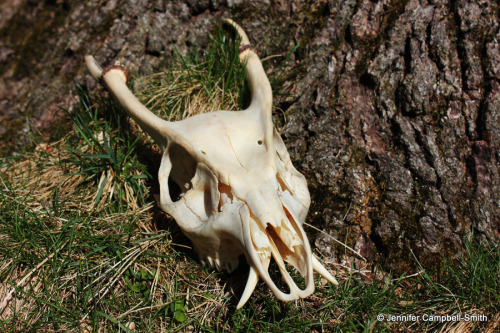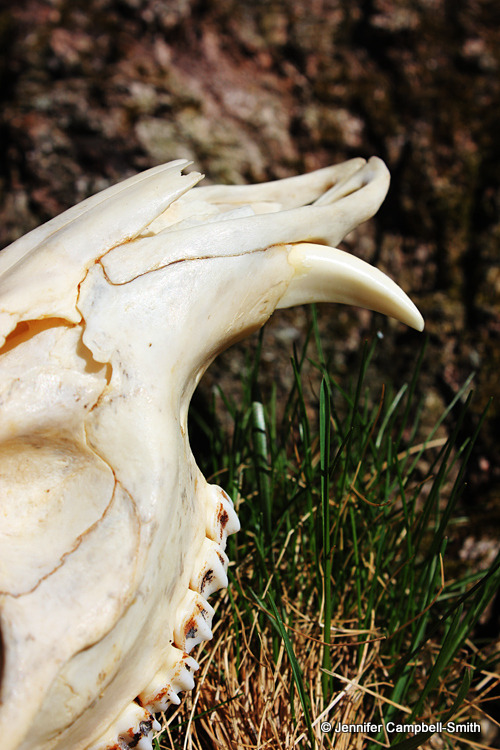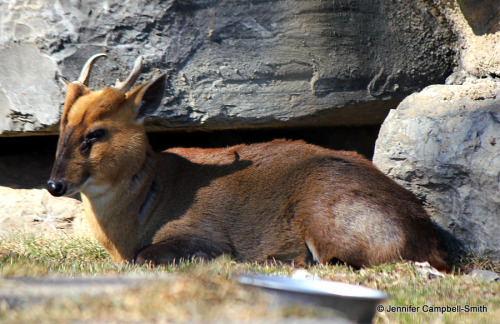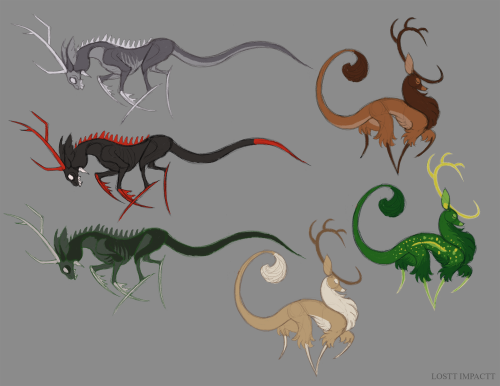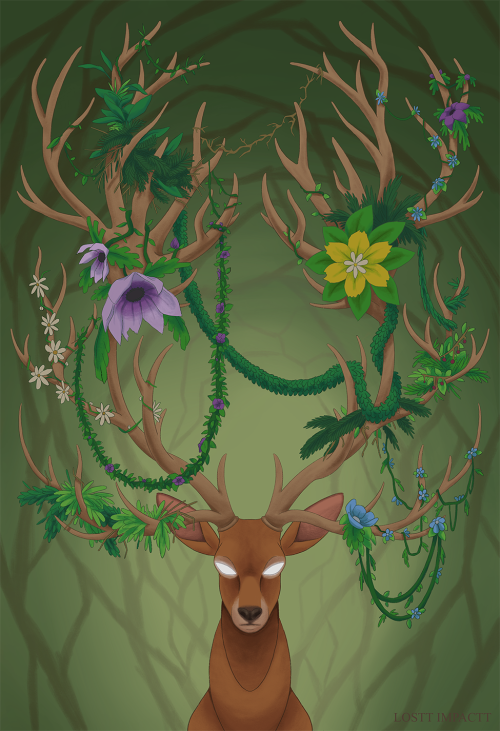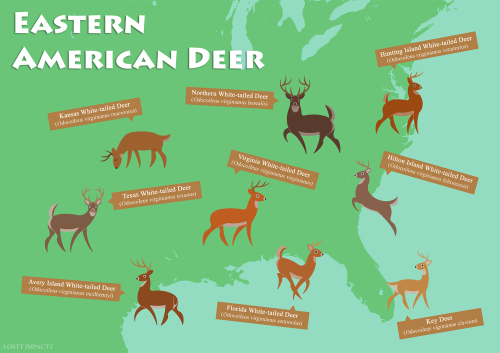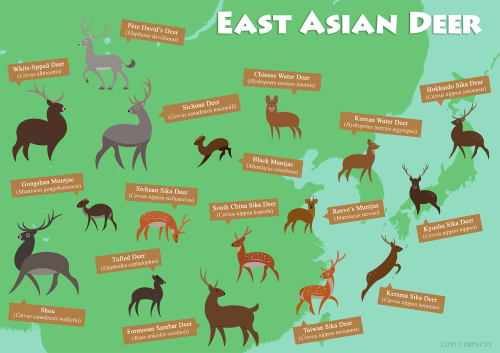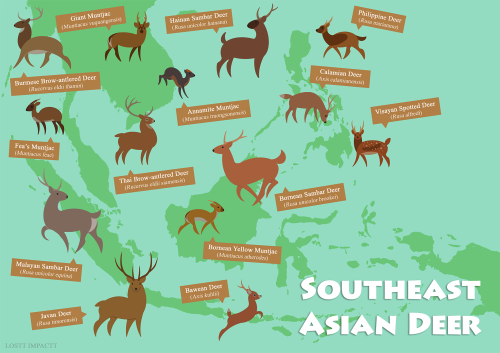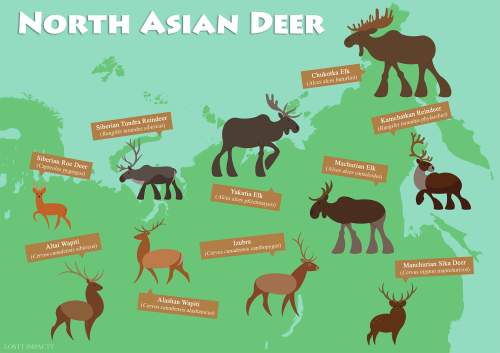#cervidae
White-tailed Fawn (by The Ecology)
While out with my friend doing field work, we encountered this very young white-tailed fawn (Odocoileus virginainus; video by him, not me). Young fawns are left in a hiding spot by their mother, where they remain motionless, while their mother forages. They are not abandoned, or orphaned, it’s just what they do when the fawns are too young to keep up with their mothers. Seeing this little guy suddenly pop out of brush right in front of us, on its own, with no mother around was slightly odd. We approached to take a closer look and it ran, and we suddenly became aware of why it was no longer in it’s hiding spot; a person was yelling to recall their large dog who was wandering in the brush patch the fawn had popped out of.
At this point, with so many humans and the dog around, the fawn was running further and further from its initial hiding spot, that it fled. I figured mom-deer would probably be a bit upset to not find her fawn near where she had left it, so we corralled it back into the patch of brush that it had initially popped out of (the dog now gone), and it laid back down, motionless, just like its instincts told it to do.
The deer in our area are a major problem. Their only effective predator at this point are humans. The coyotes aren’t good enough to really keep population numbers in check. Hopefully that will change as coyotes get bigger and better at taking deer, but until then, deer are posing major ecological concerns with over-foraging, which is affecting plant populations and the wildlife that rely on the now-nearly-nonexistent forest understory. However, you can’t get faced with a fawn and not want to see it or help it.
Did we “save” this fawn? I wouldn’t think so. I imagine a fawn, scared up by a predator, that managed to get away, would have a means (bleating, likely) to be reunited with its mother after finding a new hiding spot. But it felt nice to at least “help” a little. It was an interesting encounter at the very least, and a chance to see an adorable baby mammal up close.
One of my favorite skulls in my collection, this is a Reeves’ muntjac (Muntiacus reevesi). I purchased this skull as is, I did not clean it myself. The final photo is of a live, captive Reeves’ muntjac at a zoo.
Muntjacs are relatively small, primitive deer that have fang-like “tusks” (downward pointing canines), and trust me, they are sharp, sharper than the canines on all the carnivore skulls I have. They also have small antlers that sit on characteristically long pedicles (the permanent outgrowths of the skull’s frontal bone from which antlers grow). Males typically fight with their tusks, rather than their antlers.
There are 12 recognized species of muntjac deer, and one of the fascinating things about them as a group is their chromosome count. Not only does the Indian muntjac (M. muntjak) have the smallest chromosome count of any mammal (males have a diploid number of 7 and females of 6 chromosomes), but the diploid number of chromosomes varies largely within the same genus; Reeves’ muntjacs have a diploid number of 46 chromosomes! Because of this variation within the genus, muntjac genetics are widely studied.
I adore these deer!!
Post link

King stag of divine will,
Protect us in these sacred hills.
“Guardian of White Hills”, after the song by Black Hill from their album “Mother of All Trees”.
AaaaahhHHHHHHHH!! I’ve been so inactive lately friends, I apologize! School has been a b word. But here’s some cool recent finds because why not?
Most of these were found near streams! A hotspot for bones I’ve recently discovered ❤️❤️❤️


And a few more!






⭐️

that certain feeling of helplessness

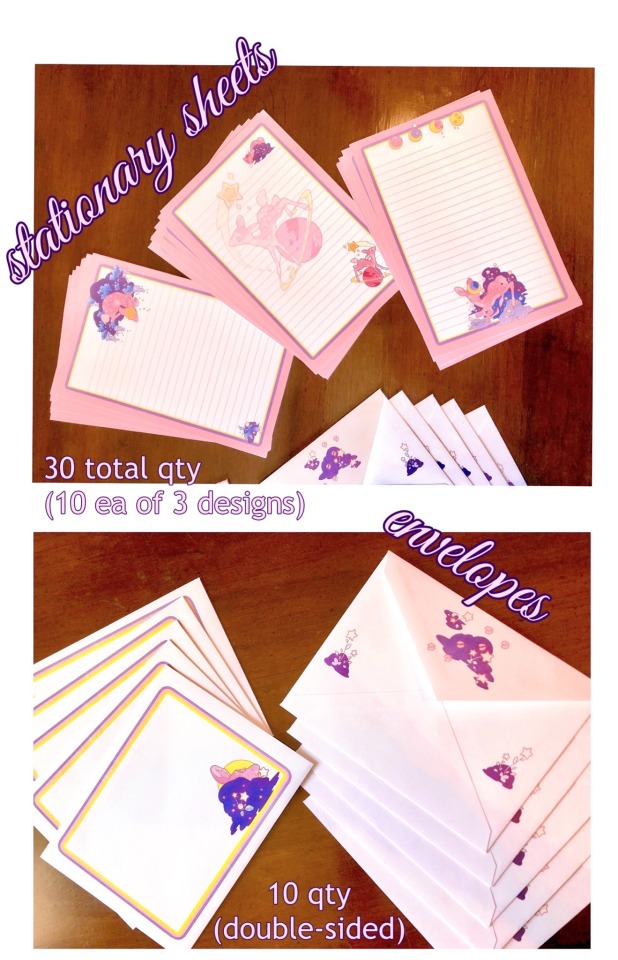

NEW! COSMIC FAWN STATIONARY SET
now available ⭐️✨

spring storms
‘Watching From Below’ shirts are now available for purchase in my shop!
- machine washable, super soft & comfy fabric
- printed in the USA by a small, independent company
- my stock is very limited, so pick yours up soon to guarantee your size
- B-Grade shirts also available for discounted price
- store link in bio






flame point

The Key deer (Odocoileus virginianus clavium), the smallest North American deer, lives only in the Florida Keys. It is a subspecies of the white-tailed deer (O. virginianus). Key deer easily swim between islands. Living close to humans, they have little of the natural fear of man. The deer are often found in residents’ yards and along roadsides where plants and flowers grow.

Key deer buck and doe
This little baby deer got so scared crossing the road from seeing the car approaching, it dropped down in the middle of the road and wouldn’t move. After stopping and turning the car off to help them calm down, the mama deer cautiously came to the rescue.
white-tailed deer (Odocoileus virginianus)




white-tailed deers
happy with the contours on these guys but i have no idea what do with them other than that :/ so here’s some potential colors at least, not satisfied yet but i might keep messing with them
Post link
i swear i draw other animals too
just some skeletal warm up-ish things, trying to nail down some proportional and anatomical consistencies and differences between species
Post link
Extinct Cervidae (True Deer)
Western Hemisphere|Eastern Hemisphere|Recently Extinct
*locations on the map aren’t even remotely close to historic ranges
*common names are taken from the IUCN red list if applicable and iNaturalist (and very rarely wikipedia)
*species that are classified as “extinct in the wild” but have active reintroduction programs are not included
*thank you tumblr for destroying the colors
Post link
Cervidae (True Deer)
Western Hemisphere|Eastern Hemisphere|Extinct
*locations on the maps aren’t exact but they’re as close to their native range as i could place them design-wise
*not every single recognized species and subspecies is represented because some i could find zero information on, let alone pictures
*common names are taken from the IUCN red list if applicable and iNaturalist (and very rarely wikipedia)
*species that are extinct in the wild but alive in captivity are not included unless they have started releasing them
*thank you tumblr for destroying the colors
Post link
Cervidae (True Deer)
Western Hemisphere|Eastern Hemisphere|Extinct
*locations on the maps aren’t exact but they’re as close to their native range as i could place them design-wise
*not every single recognized species and subspecies is represented because some i could find zero information on, let alone pictures
*common names are taken from the IUCN red list if applicable and iNaturalist (and very rarely wikipedia)
*species that are extinct in the wild but alive in captivity are not included unless they have started releasing them
*thank you tumblr for destroying the colors
Post link


